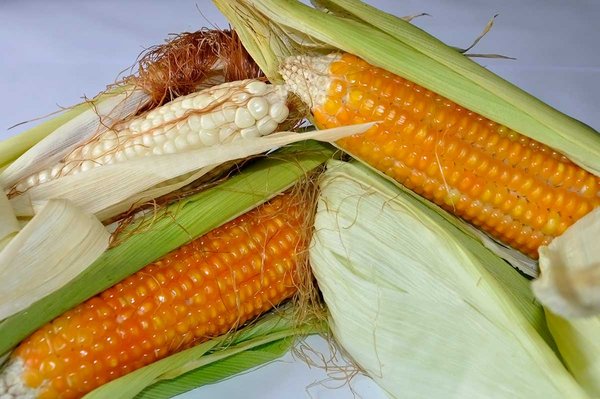 Read this article in French
Read this article in French- Share this article
- Subscribe to our newsletter
IITA – genetic analysis of important micronutrients in tropical maize
Malnutrition, especially micronutrient deficiency, has been associated with anaemia, fatigue, and in some cases is implicated in blindness and 17 per cent of all deaths in children younger than five years in developing countries.
While micronutrient deficiency is a form of malnutrition, it has been implicated in stunted growth in infants, increased oxidation stress, low immunity to infections, and slow mental development.
In a recent study by scientists from the CGIAR International Institute of Tropical Agriculture (IITA) and the University of Ibadan, in Nigeria, deficiency of micronutrients in the diet leads to ‘hidden hunger’, necessitating the need for the consumption of foods enriched with adequate content of bioavailable micronutrients.
With micronutrient deficiency prevalent in developing countries where there is high reliance on maize-based foods, the low cost of maize production and its growing use in processed products in these countries make it a suitable means for biofortification.
Listed as an important crop that can contribute to global food security, maize grains contain about 72 per cent starch, 10 per cent protein, 4.8 per cent fat, 8.5 per cent dietary fibre and 3.0 per cent sugar, with no anti-nutrients. However, most maize genotypes are low in content of vitamin A and valuable minerals, including iron and zinc.
Micronutrient accumulation is highly influenced by climatic and soil factors
According to the study carried out to analyse the genetic components of micronutrients such as zinc, iron and provitamin A (PVA) content in tropical maize (Zea mays L.), the orange and yellow colours in maize have been associated with higher nutritional value thanks to the presence of carotenoids, especially zeaxanthin and β-carotene which impart the colour.
For plants, micronutrient accumulation is highly influenced by climatic and soil factors, and this may mask the genetic potential of the crop. Nonetheless, high heritability (the ability to be attributed to inherited genetic factors) estimates for zinc and iron accumulation have been reported in maize, highlighting the low presence of environmental effects on physical expression of these traits and the possibility of transferring them to the next generation of seeds.
In maize, provitamin A is accumulated through the carotenoid biosynthetic pathway and is later changed to Vitamin A in the human body through activities of certain enzymes after consumption.
During the study, 24 yellow to orange endosperm tropical maize inbred lines with low to high levels of zinc and provitamin A were crossed using the North Carolina design II at IITA’s headquarters in Ibadan, Nigeria. These inbred lines were divided into six groups, each containing four inbred lines based on similarities in zinc and provitamin A contents determined in previous seasons to generate six sets of crosses.
Each inbred line in each group was used both as a male and a female parent to generate 96 hybrids. Inbred lines and hybrids were planted in separate trials from which data on agronomic and micronutrient traits were collected.
Results from the study showed that additive gene effects controlled provitamin A and iron content in maize predominantly, whereas both additive and non-additive gene effects were important in the inheritance of zinc content and grain yield.
Inbred lines with high general combining ability effects on micronutrient content and grain yield were also identified for use as parents to develop synthetics, hybrids and new maize inbred lines enriched with high levels of micronutrients and superior agronomic performance.
Hybrids with significant specific combining ability effects on PVA, iron and zinc were also identified during the study.
Food and nutrition security is a major target of SDG 2, and IITA-CGIAR’s research is strategically focusing on a multi-faceted approach to address this. The study recommends further research to investigate the potential of exploiting heterosis for provitamin A and mineral nutrients in maize as a major crop that millions of smallholder farmers in rural Africa depend on for food, nutrition and economic security.
Timilehin Osunde, IITA
Reference:
Noobong Udo, Ayodeji Abe, Silvestro Meseka , Wende Mengesha and Abebe Menkir: Genetic Analysis of Zinc, Iron and Provitamin A Content in Tropical Maize (Zea mays L.), January 2023, Agronomy 13(1):266
DOI:10.3390/agronomy13010266
Read more on the IITA website





Add a comment
Comments :
Currently, Africa has a number potential plant breeders, so IITA should carried out further researches to investigate the potential of exploiting heterosis for provitamin A and mineral nutrients in plants as a major crops that millions of smallholder farmers in Africa depend on for food, nutrition and economic security using these human capital found in each corner of continent. Further, to specifically address the target problems in the regions, IITA should also characterize the African countries based on their unique biotic and abiotic stresses as micro-nutrient accumulation is highly influenced by specific climatic and soil factors, and this may mask the genetic potential of the crop.
Thanks
Belay